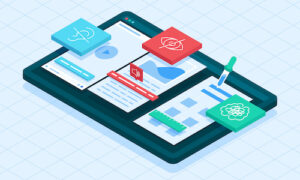Key points:
- More accessible content improves daily life for the nearly 1 in 4 adults living with a disability
- Acknowledging and addressing the varied needs of learners and instructors is critical
The completion of the academic year offers educators a unique opportunity for introspection, evaluation, and strategizing. Equipped with the insights from recent student feedback, instructors are well positioned to reflect on the successes of the term, as well as identify areas where more could be done to elevate the students’ learning experience. One such area for assessment is often the accessibility aspects of their course content.
Nearly one in four U.S. adults lives with a disability, highlighting the need for more accessible content. The concept of accessibility has evolved significantly over the last decade. In today’s educational landscape, it is essential, both ethically and legally, to ensure that individuals with disabilities have equal access to digital content, in alignment with the Section 508 Standards and the Americans with Disabilities Act (ADA).
Navigating the Landscape of Accessibility
Within higher education, acknowledging and addressing the varied needs of the learners and instructors is paramount. A one-size-fits-all approach may inadvertently overlook some learners, given the unique set of needs and shifting priorities of each student. By proactively recognizing and addressing these diverse needs, educators can stimulate greater participation, foster deeper engagement, and enhance learning outcomes.
As universities increasingly welcome non-traditional learners, the demographics within classrooms are undergoing a significant transformation. Today’s educators are tasked with teaching a diverse group of students, including working parents, busy professionals, and individuals contending with various challenges, from chronic health conditions to technological constraints.
- Changing campus safety with AI-driven video analytics - June 9, 2023
- Equitable access can improve course completion and student success - June 8, 2023
- A lack of cloud experience could harm students’ job prospects - June 7, 2023


